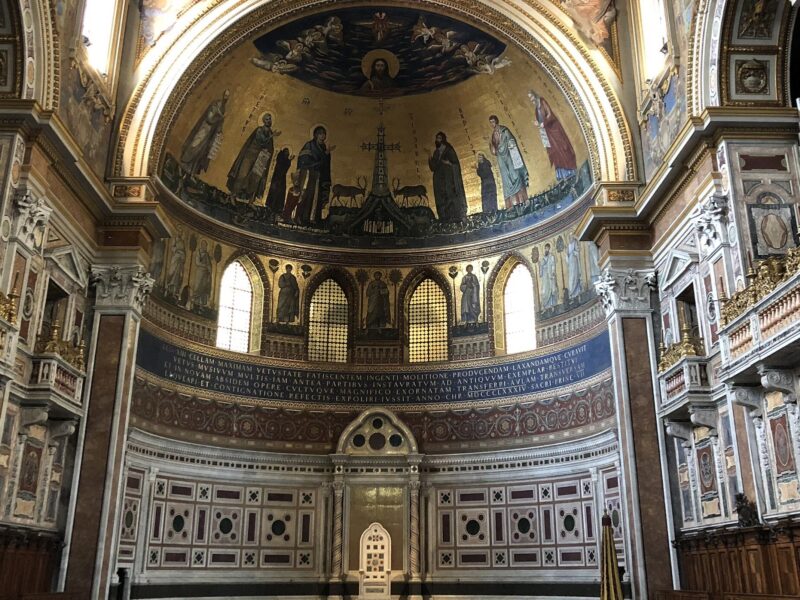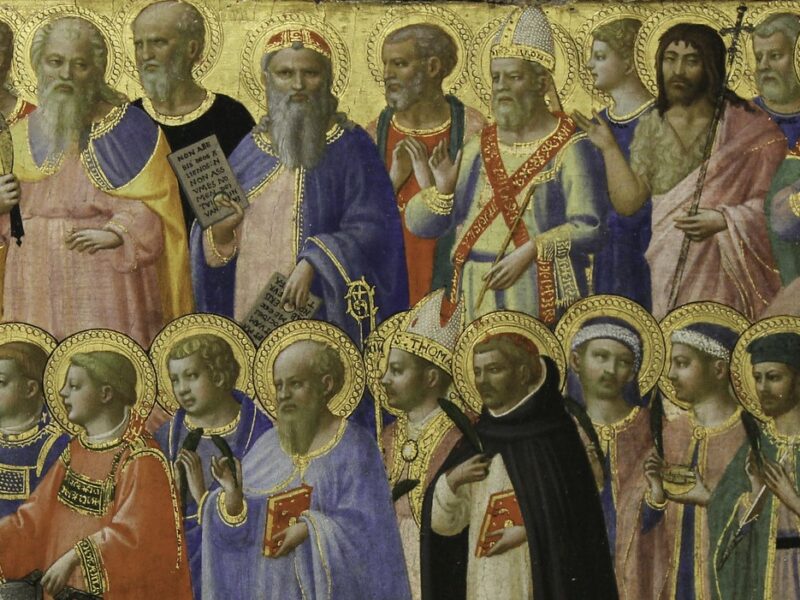
Our Firm Foundation
Thirty-third Sunday of the Year. Fr Gregory Pearson asks where we find hope in the face of destruction and persecution.
As we approach the end of the Church’s year and the readings at Mass call to mind the end times and God’s impending judgement of the world, it can perhaps be harder than at some other times to identify the good news that the Gospel offers us. More fundamentally challenging even than that, though, is the apparent contradiction in the prophecy Our Lord offers in today’s Gospel reading. Having spoken of all the trials to be faced by his hearers, culminating in the statement that ‘some of you they will put to death’ (v. 16), he then goes on to conclude by saying that ‘not a hair of your head will perish’ (v. 18). To put it bluntly, how can someone be put to death yet not a hair of their head perish?
To think about this more clearly, we should perhaps first take a step back and consider the passage as a whole. Some of Jesus’s followers have been admiring the beauty of the Temple, and he tells them it will all one day be cast down. The Temple was, we can be sure, a structure of imposing and awesome splendour; its presence in the midst of Jerusalem manifested to God’s people the blessing that was theirs in having the Lord their God so close to them (cf. e.g. Deut 4:7). It was, of course, in fact destroyed, however, within forty years of Our Lord’s crucifixion: beautiful and impressive as it was, as a sign of God’s blessing it was not permanent. We can, indeed, be grateful for the good things God gives us, we can draw spiritual nourishment from the beauty with which God is praised in art, in music, in the liturgy, but if those things become the foundation of our trust in him then we risk perceiving their loss as total disaster and putting our trust in God at risk.
Christ tells his disciples not to panic at the prospect even of impending disaster: ‘do not be terrified,’ he tells them (v. 9) as he foretells not only the destruction of the Temple but many other calamitous events which might be taken as signs of the end. Indeed, we could read the second half of today’s Gospel passage as an expansion of that account of how bad things will get and we still shouldn’t be terrified: not only will there be natural disasters and social and political catastrophes but – perhaps in case his followers thought they might somehow be spared all that – Jesus sets out specifically how ‘you’, his hearers, will be persecuted ‘for my name’s sake’ (v. 12). Following Christ is not only no guarantee of insulation from the trials of life, but can give rise to new trials of its own.
So how does any of this help with the difficulty at the end of the passage which we noted earlier? What it might draw out for us are the parallels with Christ’s own suffering and death. The talk of the destruction of the Temple has echoes of the words of Our Lord recorded in St John’s Gospel, ‘Destroy this temple, and in three days I will raise it up,’ (Jn 2:19), after which the evangelist comments, ‘He was speaking about the temple of his body’ (Jn 2:21). Jesus was delivered up by a friend, brought before a king and a governor, and put to death, and yet not a hair of his head perished, because he rose again from the dead: in doing so, he transformed what it means to die, because death no longer denotes simply the end, and it is the transformation of death by resurrection which removes the contradiction. Not a hair of your head will perish because death leads no longer to destruction or even, in the final reckoning, to the slightest diminishment, but to abundance of life.
In the incarnation, precisely by sharing in human suffering, even human dying, God in Christ manifests his closeness to humanity in a way much deeper, much more permanent, and therefore much more awesome than the wonderful beauty of the Temple in all its splendour. It is this knowledge – and not an arcane knowledge of signs of the end (cf. v. 8) – which will best prepare us for the judgement we await.
Readings: Malachi 3:19-20 | 2 Thessalonians 3:7-12 | Luke 21:5-19
Image: model of the Second Temple in Jerusalem photographed by Ariely, via Wikimedia Commons (CC BY 3.0)


